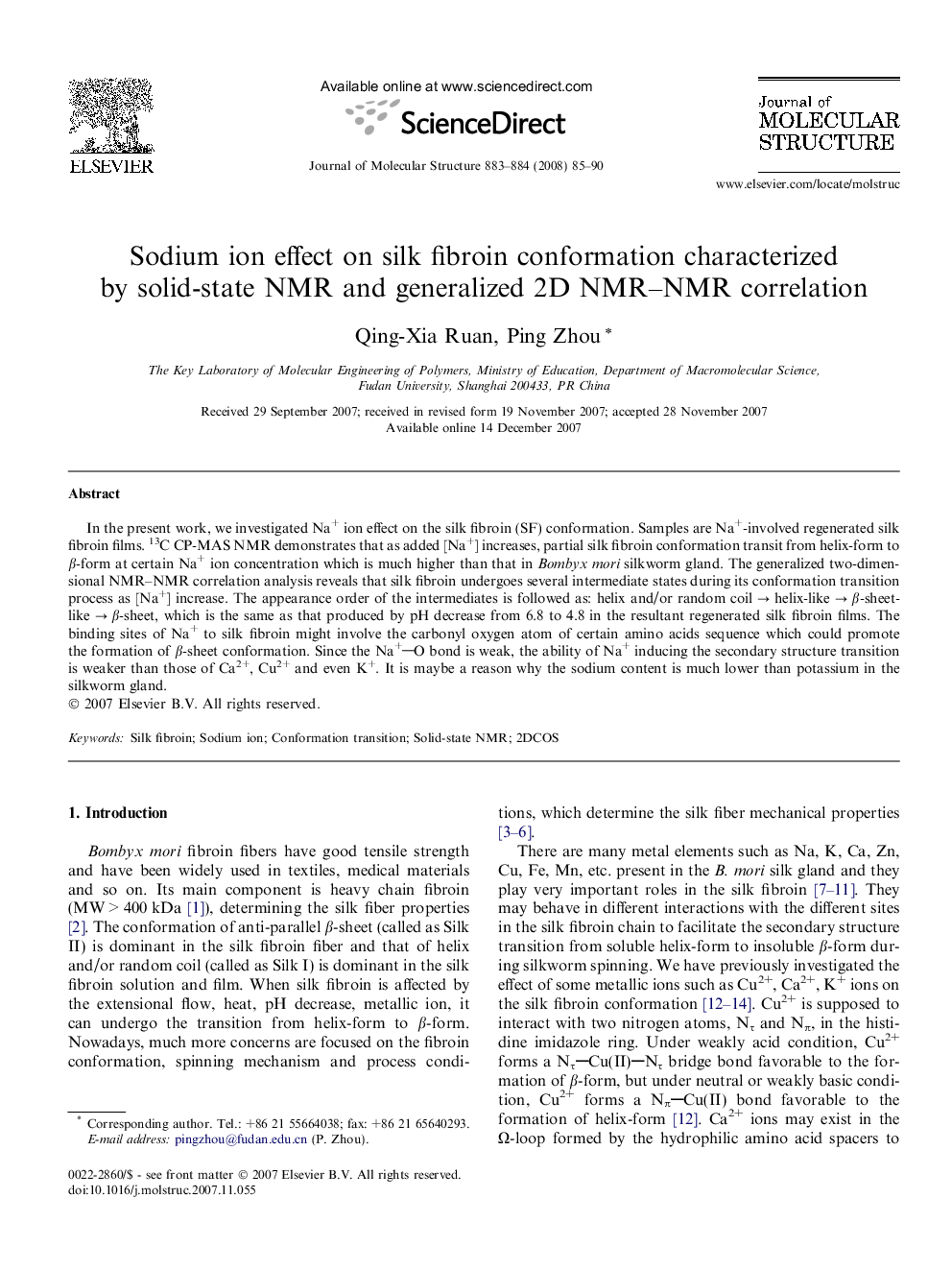| Article ID | Journal | Published Year | Pages | File Type |
|---|---|---|---|---|
| 1407307 | Journal of Molecular Structure | 2008 | 6 Pages |
In the present work, we investigated Na+ ion effect on the silk fibroin (SF) conformation. Samples are Na+-involved regenerated silk fibroin films. 13C CP-MAS NMR demonstrates that as added [Na+] increases, partial silk fibroin conformation transit from helix-form to β-form at certain Na+ ion concentration which is much higher than that in Bombyx mori silkworm gland. The generalized two-dimensional NMR–NMR correlation analysis reveals that silk fibroin undergoes several intermediate states during its conformation transition process as [Na+] increase. The appearance order of the intermediates is followed as: helix and/or random coil → helix-like → β-sheet-like → β-sheet, which is the same as that produced by pH decrease from 6.8 to 4.8 in the resultant regenerated silk fibroin films. The binding sites of Na+ to silk fibroin might involve the carbonyl oxygen atom of certain amino acids sequence which could promote the formation of β-sheet conformation. Since the Na+O bond is weak, the ability of Na+ inducing the secondary structure transition is weaker than those of Ca2+, Cu2+ and even K+. It is maybe a reason why the sodium content is much lower than potassium in the silkworm gland.
